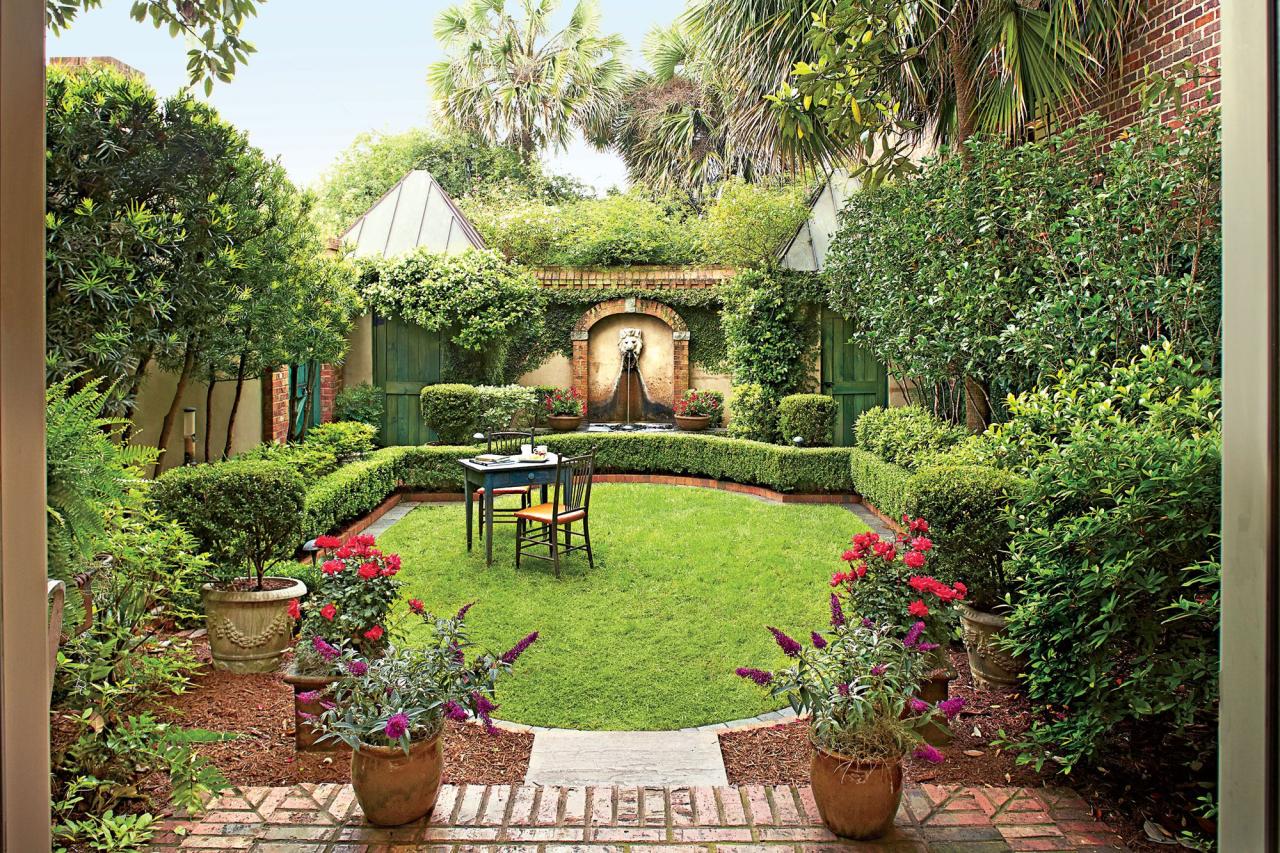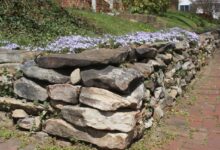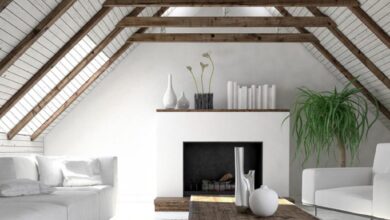Courtyard Garden Design Guide
Courtyard gardens offer a unique opportunity to create a tranquil and beautiful outdoor space, even in the most confined settings. From tiny urban oases to larger, more elaborate designs, these enclosed gardens provide a sense of privacy and intimacy, allowing for creative expression in a limited area. This guide explores the planning, design, and maintenance of courtyard gardens, covering everything from plant selection and water features to lighting and decorative elements.
We’ll delve into various design styles, offering inspiration and practical advice to help you transform your courtyard into a personal haven.
Whether you’re envisioning a minimalist retreat or a vibrant Mediterranean escape, the possibilities are vast. We’ll examine the key considerations for different courtyard sizes and orientations, ensuring your design is both aesthetically pleasing and practical. We’ll also discuss the importance of choosing plants suited to your specific climate and light conditions, along with effective maintenance techniques to keep your garden thriving year-round.
Defining the Courtyard Garden
Courtyard gardens are enclosed outdoor spaces, typically situated within the confines of a building or a group of buildings. They offer a private and secluded area for relaxation and enjoyment, often providing a contrast to the surrounding urban or built environment. Their design and function are highly adaptable, ranging from simple, functional spaces to elaborate, meticulously planned oases.A courtyard garden’s defining characteristic is its enclosure.
This can be achieved through walls, fences, buildings, or a combination thereof, creating a sense of intimacy and protection from external elements. This enclosed nature allows for a more controlled environment, facilitating specific microclimates and design choices. The lack of exposure to prevailing winds and direct sunlight can make them ideal for growing plants that might struggle in less sheltered locations.
Courtyard Garden Dimensions and Styles
Courtyard gardens exhibit a wide variety of sizes and styles, adapting to the available space and the owner’s preferences. They can range from tiny urban patios, measuring only a few square meters, to expansive courtyards encompassing hundreds of square meters. The style can vary considerably, from minimalist modern designs featuring clean lines and sleek materials to traditional, more ornate styles incorporating classical elements like fountains, statuary, and carefully manicured hedges.
Small courtyards might utilize vertical gardening techniques to maximize space, while larger ones can accommodate more ambitious landscaping projects including water features and pathways. The design is often dictated by the architecture of the surrounding buildings and the available light.
Courtyard gardens offer a private oasis, perfect for relaxation and enjoying the outdoors. To maximize the connection between the indoor and outdoor spaces, many designs incorporate French windows , which allow for seamless transitions and stunning views. This creates a bright and airy feel, extending the garden’s charm into the heart of the home, making the courtyard garden feel even more spacious.
Distinguishing Courtyard Gardens from Other Garden Types
The key difference between a courtyard garden and other garden types lies primarily in its enclosed nature and its relationship to the surrounding buildings. Unlike a traditional backyard garden, which typically opens onto a larger expanse of land, a courtyard garden is deliberately enclosed and integrated into the building’s structure. It differs from a rooftop garden in its location; a rooftop garden sits atop a building, while a courtyard garden is at ground level, often sunken or partially sunken into the building’s footprint.
It’s also distinct from a patio, which is typically a paved area for seating and outdoor living, whereas a courtyard garden often incorporates a wider range of landscaping elements, including planting and water features.
Design Aesthetics in Courtyard Gardens
A multitude of design aesthetics can be successfully employed in courtyard gardens. A minimalist design might feature simple, geometric shapes, clean lines, and a limited palette of plants and materials. A Mediterranean style courtyard might evoke a sense of warmth and dryness, utilizing drought-tolerant plants, terracotta pots, and stone paving. A tropical style courtyard could create a lush, vibrant atmosphere using moisture-loving plants, bamboo, and water features.
A Japanese-inspired courtyard could incorporate elements like carefully raked gravel, bonsai trees, and a Zen-like atmosphere of tranquility. The choice of aesthetic depends largely on personal preference and the desired atmosphere.
Planning and Design Considerations
Transforming a small, often overlooked space into a vibrant courtyard garden requires careful planning and design. Success hinges on maximizing limited space, selecting appropriate plants, and choosing durable, weather-resistant materials. Understanding sunlight and shade patterns is crucial for plant health and overall aesthetic appeal.
A Small Courtyard Garden Layout
A practical layout for a small courtyard garden prioritizes functionality and visual appeal within a limited footprint. Imagine a space approximately 10ft x 10ft. One design option could feature a central paved area, perhaps using flagstones or gravel, for seating or a small table. Bordering this central area, raised planters could be installed, maximizing vertical space and creating visual interest.
These planters could be constructed from wood, brick, or even repurposed materials. A climbing plant, such as ivy or clematis, could be trained to grow along a wall or trellis, adding height and softening hard lines. Finally, a small water feature, like a birdbath or a small fountain, could add a soothing element and enhance the overall ambience.
This design allows for both usable space and attractive planting, all within a compact area.
A Planting Scheme Emphasizing Vertical Growth
Vertical gardening is essential for small courtyard gardens. This technique maximizes space and creates a visually stunning effect. Consider using climbing plants like ivy, jasmine, or climbing roses to cover walls or trellises. These plants can be trained to grow upwards, creating a lush green canopy. In addition to climbers, consider planting taller plants in containers or raised beds, such as bamboo, or certain varieties of grasses, which will add height and texture.
Smaller plants, such as herbs or flowering annuals, can be placed at the base of the taller plants, creating layers of interest. For example, a tall bamboo plant could be surrounded by shorter lavender plants and trailing nasturtiums. This layering creates depth and visual appeal while optimizing limited space.
Materials Commonly Used in Courtyard Garden Construction
The choice of materials is vital for the longevity and aesthetic appeal of your courtyard garden. Durability and weather resistance are key factors to consider. Common materials include: paving stones (flagstone, brick, or concrete) for pathways and seating areas; timber (treated for rot resistance) for raised beds and planters; metals (galvanized steel or powder-coated aluminum) for trellises and other structures; gravel or pebbles for ground cover; and various types of bricks for walls and edging.
The selection should align with the overall design style and budget.
Sunlight and Shade in Courtyard Garden Planning
Sunlight and shade significantly impact plant selection and placement. Accurate assessment of sunlight exposure throughout the day is crucial. A south-facing courtyard will receive more direct sunlight than a north-facing one. This information dictates which plants will thrive. Sun-loving plants, such as lavender and rosemary, should be placed in sunny areas, while shade-tolerant plants, such as hostas and ferns, should be placed in shadier spots.
Observing the sunlight patterns throughout the day – noting periods of direct sunlight and shade – is key to ensuring the success of your planting scheme. Consider incorporating shade-providing structures, such as pergolas or awnings, if necessary, to protect plants from harsh midday sun.
Plant Selection and Care
Choosing the right plants is crucial for a thriving courtyard garden, regardless of whether your space is sun-drenched or perpetually shaded. Careful consideration of light levels, soil conditions, and your personal preferences will ensure a beautiful and manageable garden. This section will guide you through plant selection, address common courtyard gardening challenges, and offer specific care instructions for popular choices.
Suitable Plants for a Shaded Courtyard Garden
Courtyards often receive limited sunlight, requiring the selection of shade-tolerant plants. These plants are adapted to thrive even with minimal direct sunlight. Successful planting involves understanding their specific light and moisture requirements.
Courtyard gardens offer a tranquil escape, often featuring charming seating areas and vibrant plant life. To maximize the connection between the indoors and this peaceful space, many homeowners choose to install French doors , which allow for seamless transitions and plenty of natural light. This creates a truly inviting atmosphere, blurring the lines between the interior and the carefully cultivated courtyard garden.
- Hostas: These popular perennials offer a wide variety of leaf colors and textures, tolerating deep shade and moist soil. Regular watering is essential, especially during dry periods. They require minimal fertilization.
- Astilbe: Known for their feathery plumes of flowers in various shades, Astilbes prefer partial to full shade and consistently moist soil. They benefit from regular deadheading to encourage further blooming.
- Ferns: Many fern varieties thrive in shaded, moist environments. They prefer well-drained soil and consistent moisture. Avoid letting the soil completely dry out.
- Heuchera (Coral Bells): These plants offer attractive foliage in a range of colors and textures. They tolerate partial shade and well-drained soil. Regular watering is recommended, especially during hot, dry weather.
Challenges of Growing Plants in a Courtyard Environment and Solutions
Courtyard gardens often present unique challenges compared to traditional gardens. These include limited sunlight, restricted air circulation, and potential for extreme temperatures.
- Limited Sunlight: Choose shade-tolerant plants as discussed above. Consider supplementing with artificial grow lights if necessary, particularly during winter months. Strategic placement of plants to maximize available sunlight is also beneficial.
- Restricted Air Circulation: Poor air circulation can lead to increased humidity and fungal diseases. Regular pruning to improve air flow is important. Choose plants that are less susceptible to fungal problems. Ensure good spacing between plants to prevent overcrowding.
- Extreme Temperatures: Courtyards can experience significant temperature fluctuations, particularly in summer. Choose plants that are tolerant of both heat and cold. Provide shade during the hottest parts of the day, and protect plants from frost during winter.
- Soil Drainage: Poor drainage can lead to root rot. Amend heavy clay soils with organic matter to improve drainage. Consider raised beds or containers for better control over soil conditions.
Drought-Tolerant Plants for a Hot, Sunny Courtyard
For sun-drenched courtyards, selecting drought-tolerant plants is key to minimizing watering needs and maintaining a healthy garden.
- Lavender: Known for its fragrant flowers and silvery foliage, lavender thrives in full sun and well-drained soil. It requires minimal watering once established.
- Rosemary: This aromatic herb is highly drought-tolerant and prefers full sun. It’s a low-maintenance choice that adds both beauty and culinary value.
- Sedum (Stonecrop): Sedums are succulents that come in various shapes, sizes, and colors. They tolerate full sun, heat, and drought conditions with minimal care.
Lavender Care
Lavender (Lavandula) is a popular choice for courtyard gardens due to its hardiness and beautiful purple flowers. Proper care ensures a healthy, long-lasting plant.
Courtyard gardens offer a tranquil escape, perfect for unwinding after a meal. Imagine enjoying your morning coffee amidst the greenery, then heading inside to a beautifully appointed dining area, like those showcased on this website dedicated to Dining room (salle à manger) design. Afterwards, you can return to the peaceful courtyard garden, perhaps to read a book in the afternoon sun.
Lavender thrives in full sun and well-drained soil. It prefers slightly alkaline soil conditions. Regular pruning is essential to maintain its shape and prevent legginess. Prune after flowering, removing about one-third of the plant’s height. Water deeply but infrequently, allowing the soil to dry out between waterings.
Courtyard gardens offer a tranquil escape, a private oasis within a larger structure. Their design often reflects the architectural style of the surrounding building; for instance, the formal geometry of many courtyard gardens is strongly reminiscent of French architecture , with its emphasis on symmetry and carefully planned layouts. This careful planning extends to the planting schemes, creating a harmonious blend of architecture and nature within the courtyard itself.
Fertilize sparingly, as over-fertilization can lead to leggy growth. In colder climates, provide winter protection to prevent frost damage.
Designing a courtyard garden involves careful planning, considering factors like sunlight and space. Fuel costs, however, can impact the budget; checking a price comparison like this one for fuel, Perbandingan harga BBM Pertamina Patra Niaga dengan kompetitor , can help you manage expenses for transportation of materials. This careful budgeting ensures your beautiful courtyard garden comes to life without exceeding your financial limits.
Incorporating Water Features
Adding a water feature to a courtyard garden significantly enhances its aesthetic appeal and creates a tranquil atmosphere. The gentle sound of flowing water masks unwanted city noise, while the visual element introduces movement and life to the otherwise static space. The reflective surfaces of water also help to amplify light, making the courtyard feel brighter and more spacious, especially beneficial in smaller courtyards.The benefits of incorporating a small water feature extend beyond the purely aesthetic.
The calming sounds of water have a proven relaxing effect, reducing stress and improving overall well-being. Furthermore, a water feature can increase biodiversity by attracting beneficial insects and birds, adding another layer of interest to the garden.
Water Feature Design for a Courtyard Setting
A small, aesthetically pleasing water feature for a courtyard could be a simple, self-contained fountain. Imagine a square, tiered fountain constructed from dark grey granite. Each tier is slightly smaller than the one below, creating a cascading effect. The top tier features a single, central spout releasing a gentle stream of water into the basin below. Small, strategically placed LED lights within the fountain basin illuminate the water at night, enhancing its visual appeal.
The fountain’s overall height is approximately 3 feet, making it proportional to a typical courtyard space without dominating it. Surrounding the fountain, a bed of low-maintenance, drought-tolerant succulents in varying shades of green and grey would complement the granite and provide a textural contrast.
Fountain and Pond Maintenance in a Courtyard Garden
Maintaining a courtyard water feature requires regular attention to ensure its longevity and aesthetic appeal. For a fountain, this includes regularly cleaning the basin to remove debris and algae buildup. This should be done at least once a week, or more frequently depending on the climate and environmental conditions. The pump should be inspected monthly for proper functioning and cleaned as needed to prevent blockages.
Water should be topped up regularly to maintain the water level. For a pond, weekly skimming of the surface to remove leaves and debris is essential. Regular water testing is crucial to monitor water quality and adjust chemical balances as needed. Depending on the size and type of pond, periodic cleaning of the bottom may also be necessary to remove accumulated sediment.
Courtyard gardens offer a tranquil escape, perfect for relaxation and entertaining. To enhance the atmosphere, consider incorporating elements of rustic French decor, like you might find inspiration for Rustic French decor , to create a charming and inviting space. Think weathered stone, wrought iron accents, and perhaps even a lavender bush – all contributing to the overall charm of your courtyard garden.
Winterization may also be required in colder climates to protect the pump and any aquatic plants.
Comparison of Water Feature Types for Courtyards, Courtyard garden
Several types of water features are suitable for courtyard gardens, each with its own advantages and disadvantages. A simple fountain, as described above, offers ease of maintenance and a relatively low cost. However, it may lack the biodiversity-enhancing capabilities of a small pond. A small pond, on the other hand, can support aquatic plants and attract wildlife, adding another dimension to the garden.
However, ponds require more significant maintenance, including regular water changes and cleaning, and may require more space. A wall-mounted water feature offers a space-saving alternative, especially for smaller courtyards, but might lack the visual impact of a freestanding fountain or pond. The choice ultimately depends on the available space, budget, and desired level of maintenance.
Adding Lighting and Decor

Source: southernliving.com
Transforming your courtyard garden from a pleasant space into a truly magical retreat involves thoughtful consideration of lighting and decorative elements. The right lighting can dramatically alter the mood and ambiance, while carefully chosen décor can personalize the space and enhance its overall aesthetic appeal.
Lighting Plan for a Courtyard Garden
A well-designed lighting plan utilizes a blend of ambient and accent lighting to create a layered and captivating effect. Ambient lighting provides overall illumination, setting the general tone. This might include pathway lighting using low-voltage LED bollards, softly illuminating the garden paths and preventing tripping hazards. Accent lighting, on the other hand, highlights specific features, such as a beautiful statue, a vibrant flowering plant, or a striking water feature.
Spotlights directed at these focal points draw the eye and create visual interest. Consider using solar-powered spotlights for environmentally friendly and cost-effective accent lighting. For a more sophisticated approach, integrated LED strip lighting can be subtly incorporated into pathways or built into raised planters, offering a soft, diffused glow.
Material and Texture Selection for Enhanced Aesthetics
The materials and textures you choose play a crucial role in defining the character and style of your courtyard garden. Natural materials such as stone, wood, and terracotta create a warm and inviting atmosphere, while metallic accents like wrought iron or copper can add a touch of elegance or rustic charm, depending on the style. Consider the interplay of textures – the smoothness of polished stone contrasting with the roughness of a natural wood fence, for example.
Mixing different materials and textures adds depth and visual interest, preventing the space from feeling monotonous. For instance, a stone patio could be complemented by wooden planters and a metal sculpture, creating a dynamic and engaging space.
Seating Area Design for Courtyard Gardens
Designing a comfortable seating area within the confines of a courtyard garden requires careful consideration of space limitations. Built-in seating, such as a low stone bench or a raised planter with seating incorporated into its design, maximizes space efficiency. For smaller courtyards, a single comfortable chair or a small bistro set might suffice. Larger spaces could accommodate a more elaborate seating arrangement, perhaps a small conversation set or even a hammock for relaxation.
The choice of materials should complement the overall design of the courtyard, maintaining a cohesive aesthetic. Consider adding cushions or throws for added comfort and visual appeal. Ensure adequate lighting around the seating area for evening enjoyment.
Use of Decorative Elements
Decorative elements like sculptures, fountains, and strategically placed plants add personality and charm to a courtyard garden. A small, well-placed sculpture can become a focal point, drawing the eye and adding artistic interest. The choice of sculpture should reflect your personal taste and the overall style of the garden. A fountain, even a small one, adds a soothing auditory element and creates a sense of tranquility.
The gentle sound of running water is incredibly relaxing and can mask unwanted noise from the surrounding environment. Consider incorporating bird baths or feeders to attract wildlife and add a touch of natural dynamism to the space. Remember, less is often more – avoid overcrowding the space with too many decorative elements. Careful placement and selection are key to creating a harmonious and visually appealing courtyard garden.
Practical Considerations and Maintenance
Maintaining a courtyard garden requires consistent effort, but the rewards of a thriving green space are well worth it. Regular upkeep ensures the health of your plants, prevents pest infestations, and keeps your garden looking its best. The specific tasks and their frequency will depend on the plants you choose and the climate you live in, but a regular schedule will help you stay on top of things.
Common Maintenance Tasks and Frequency
A well-structured maintenance schedule is key to a healthy courtyard garden. This includes regular watering, weeding, fertilizing, and pruning. Watering frequency depends heavily on weather conditions and plant type; some plants may need daily watering, especially during hot, dry spells, while others may only require watering once or twice a week. Weeding should be done regularly, ideally before weeds go to seed, to prevent them from spreading.
Fertilizing, usually done in spring and fall, provides essential nutrients to support healthy growth. Pruning, removing dead or damaged growth, helps maintain the shape and health of your plants and should be done as needed, following the specific needs of each plant species. For example, many flowering shrubs benefit from pruning after they bloom to encourage more flowers the following year.
Tools and Supplies Checklist for Courtyard Garden Maintenance
Having the right tools makes maintenance easier and more efficient. A basic toolkit should include hand trowels for planting and weeding, pruning shears for trimming, a watering can or hose, gardening gloves to protect your hands, and a small wheelbarrow or bucket for transporting materials. Additional items, such as a soil testing kit, fertilizer, and pest control products, might also be needed depending on your garden’s specific needs.
A sturdy pair of secateurs is essential for precise pruning of smaller stems and branches. A garden fork is helpful for loosening compacted soil. Consider a kneeling pad to make working in the garden more comfortable.
Pest and Disease Control in Courtyard Gardens
Courtyard gardens, often enclosed and sheltered, can be more susceptible to certain pests and diseases due to limited air circulation. Early detection is crucial. Regular inspection for signs of pests (like aphids, spider mites, or mealybugs) and diseases (like powdery mildew or fungal leaf spots) is essential. Integrated pest management (IPM) strategies are preferred, focusing on prevention and less-toxic methods first.
This may involve hand-picking pests, using insecticidal soap or neem oil for mild infestations, or introducing beneficial insects like ladybugs to control pests naturally. For more serious problems, consult a local garden center for advice on appropriate, environmentally-friendly solutions. Remember to always follow the instructions on any pest control product carefully.
Ensuring Proper Drainage in a Courtyard Garden
Proper drainage is critical to prevent root rot and other plant diseases. If your courtyard has poor drainage, water will accumulate around plant roots, leading to problems. Before planting, amend heavy clay soil with organic matter like compost to improve drainage. Consider installing a drainage system, such as gravel layers beneath the soil or strategically placed drainage pipes, if necessary.
Raised garden beds can also improve drainage, particularly in areas with naturally poor drainage. Ensure that your planting containers have adequate drainage holes to prevent waterlogging. Regularly check for signs of waterlogging, such as consistently soggy soil or yellowing leaves.
Illustrative Examples: Courtyard Garden
Courtyard gardens offer a fantastic opportunity for creative expression and personal style. The following examples showcase diverse design approaches, demonstrating how different themes and priorities can shape the overall aesthetic and functionality of the space.
Mediterranean Courtyard Garden
This design evokes the sun-drenched landscapes of the Mediterranean. Imagine a space dominated by warm, earthy tones. The walls might be rendered in a terracotta hue, perhaps with stucco detailing. The flooring could be paved with natural stone, like flagstones or terracotta tiles, creating a textured surface. Plant choices would emphasize drought-tolerant species known for their silvery foliage and vibrant blooms.
Lavender, rosemary, and olive trees would provide a fragrant and textural backbone. Bright splashes of color would come from bougainvillea, vibrant geraniums, and perhaps a climbing trumpet vine. The overall atmosphere is one of relaxed warmth and inviting serenity, a small slice of the Mediterranean sun captured within the walls. The textures are varied, from the smooth stucco to the rough stone and the soft, velvety lavender leaves.
A small, weathered fountain adds a soothing auditory element, further enhancing the tranquil atmosphere.
Minimalist Courtyard Garden
A minimalist courtyard garden prioritizes clean lines, simplicity, and a sense of calm. The color palette is typically restrained, perhaps featuring shades of gray, white, and black, with one or two accent colors. The planting scheme is sparse, featuring a few carefully selected plants with strong architectural forms. Bamboo, with its vertical lines, or a single, elegantly shaped Japanese maple could be focal points.
Materials are chosen for their inherent beauty and durability. Concrete or smooth paving stones create a clean, uncluttered surface. A sleek, modern water feature, perhaps a minimalist fountain or a reflecting pool, adds a subtle visual and auditory element. The overall feeling is one of serenity and understated elegance, a space for contemplation and quiet enjoyment.
The lack of clutter and the carefully chosen elements create a sense of calm and order.
Privacy-Focused Courtyard Garden
This design prioritizes seclusion and creates a sheltered haven within the urban environment. Tall, densely planted evergreen shrubs, such as Leyland cypress or hollies, form a living wall, creating a screen from neighboring properties. The layout might incorporate a winding path leading to a secluded seating area, further enhancing the sense of privacy. Climbing plants, like ivy or clematis, could be trained on trellises or pergolas to add vertical interest and further obscure the view from outside.
Courtyard gardens offer a tranquil escape, a private oasis within the home. Their calming atmosphere can easily extend into the rest of your house, especially if you create a visual connection to your living room (salon) , perhaps by using similar colours or materials. This way, the peaceful vibe of the courtyard seamlessly flows into your main living space, enhancing the overall feeling of serenity throughout your home.
The planting scheme should incorporate a mix of textures and heights to create depth and visual interest while maintaining the privacy screen. Consider incorporating flowering shrubs and trees to add bursts of color and fragrance, while still maintaining the overall screening effect. The use of strategically placed structures, such as high walls or strategically positioned screens, reinforces the feeling of seclusion.
The result is a tranquil and private oasis, offering a welcome retreat from the outside world.
Comparative Analysis of Styles
Courtyard gardens, while sharing the commonality of being enclosed spaces, can vary dramatically in style and design philosophy. A comparison of two distinct approaches – the Japanese and the traditional English courtyard garden – highlights the contrasting aesthetic values and horticultural techniques employed. These differences reflect broader cultural and historical influences on garden design.Japanese and English courtyard gardens, despite both being enclosed spaces designed for contemplation and relaxation, showcase vastly different design principles.
The Japanese style prioritizes minimalism, naturalism, and a deep connection with nature’s ephemeral beauty, while the English style often emphasizes a more abundant, lush, and often formally structured planting scheme. This contrast extends to the use of materials, the incorporation of water features, and the overall feeling evoked by the garden.
Japanese vs. English Courtyard Garden Design Principles
| Feature | Japanese Courtyard Garden | Traditional English Courtyard Garden |
|---|---|---|
| Overall Aesthetic | Minimalist, natural, serene, emphasizing asymmetry and natural irregularity. | Lush, abundant, often formal and symmetrical, showcasing a variety of textures and colors. |
| Plant Selection | Careful selection of plants with symbolic meaning, often featuring bonsai, moss, bamboo, and carefully pruned evergreens. Emphasis on texture and subtle color variations. | Wide range of flowering plants, shrubs, and sometimes climbers, chosen for their visual impact and fragrance. Often features a mix of textures and colors, aiming for a vibrant and abundant display. |
| Water Features | Often includes a small, carefully positioned pond or stream, representing natural elements and reflecting the sky. Simplicity and tranquility are key. | May incorporate a fountain, birdbath, or small pond, but the emphasis is less on naturalism and more on visual interest and perhaps sound. |
| Materials | Natural materials such as stone, wood, and gravel are predominantly used. Simplicity and natural aging are valued. | May include a wider variety of materials, such as stone, brick, wrought iron, and terracotta. Formal elements like paved areas are common. |
| Layout and Structure | Asymmetrical design, often incorporating pathways that lead the eye through carefully chosen views. Emphasis on creating a sense of depth and perspective. | Often features a more formal and symmetrical layout, with clearly defined pathways and planting beds. The design might emphasize a central focal point. |
Conclusion
Creating a thriving courtyard garden is a rewarding journey that blends artistry and practicality. By carefully considering the design elements discussed – from plant selection and water features to lighting and maintenance – you can transform a small, enclosed space into a vibrant and inviting sanctuary. Remember to prioritize your personal style and preferences, letting your creativity guide the process.
The result will be a unique and beautiful outdoor space that you can enjoy for years to come. So, start planning, get creative, and enjoy the process of building your own little piece of paradise!
Questions and Answers
What is the best time of year to plant in a courtyard garden?
The best time to plant depends on your climate and the specific plants you’re using. Generally, spring and fall are ideal for most plants, as they offer milder temperatures and consistent moisture.
How can I maximize privacy in my courtyard garden?
Use tall, dense plants like bamboo or climbing vines to create natural screens. Consider adding trellises or walls for extra privacy.
What are some low-maintenance plants for a courtyard garden?
Succulents, herbs, and certain types of grasses are relatively low-maintenance options, requiring less frequent watering and pruning.
How do I deal with pests and diseases in a courtyard garden?
Regular inspection, proper plant spacing to promote air circulation, and the use of organic pest control methods are key. Consult a local gardening expert for specific advice.









